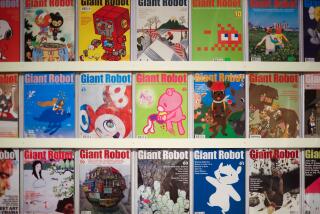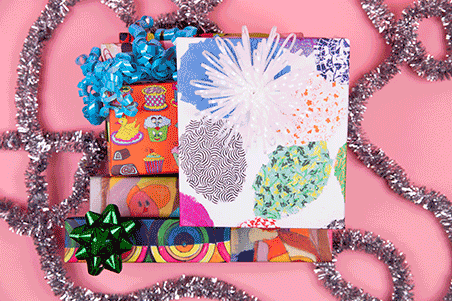Bent Into Shape : JPL Physicist-Origami Artist Makes Child’s Play of Scientific Principles
Robert J. Lang can’t wait to get home from the office--just so he can start his paperwork.
Lang, a physicist at the Jet Propulsion Laboratory in La Canada Flintridge, loves to spend evenings practicing origami, the ancient Japanese art of folding paper into animals, flowers and other intricate designs.
By following instructions in a book for children, Lang made his first design--a dinosaur--at the age of 6. Now, at 30, he is writing his own books and is considered an international expert and innovator in the art of folding paper.
“It’s almost a little embarrassing,” said Lang from an office cluttered with computer disks, books, scientific journals and, of course, a collection of brightly colored paper designs that include a dragonfly, triceratops, lion fish and skunk. “As a child, it was OK to make these designs because it was a child’s game. Now, as an adult, it still seems like a child’s game.”
But there is nothing childish about how seriously Lang takes his avocation.
“He creates the most complex origami in the world,” said Michael Shall, president of the Friends of the Origami Center of America, a New York-based association with about 1,200 members. “A lot of what he does is groundbreaking.”
What sets Lang apart is that he is, at once, both scientist and artist.
“Origami has not ceased being an art in any way,” said Lang, who lives in Altadena with his wife and 17-month-old son. “But what has happened is that the art has progressed by absorbing a healthy dose of mathematics and science.”
For example, in a relatively simple model of an animal, the corners of the paper would be used for legs. But with Lang’s latest creation--a spotted ladybug made by using a single sheet of paper with different colors on each side--the edges of the paper become the spots, and the legs are made from the center. In origami’s purest form, as practiced by Lang, the paper is square and never cut.
“The way it’s been done up until the 1960s is that people would just take a sheet of paper and start doodling . . . just folding, unfolding and folding,” Lang said. “But trial and error will not get you where you are going in a more complex design.”
Lang and a few others thus rely on the laws of physics, engineering and mathematics to form detailed blueprints. Recently, they have even begun to use computers to assist them in their diagraming.
Lang’s most complicated model is his Black Forest cuckoo clock, which includes shapes depicting a deer’s head, leaves and pine cones. The clock departs from the strict rules of origami because it is formed from a rectangular piece of paper. It requires 220 steps to complete, five to 10 times more than most models.
Lang took about two months just to diagram the 40 pages of instructions for the clock, which contains about 200 yards of creases.
Lang’s work is considered by some to have a limited appeal because it is too technical for many “folders,” as they call themselves, to duplicate. “I don’t understand a lot of the things he writes, and I’ve been folding paper for 40 years,” Shall said.
However, Lang doesn’t get bent out of shape over such comments.
“I want my work to be as realistic as possible and to come out beautiful,” he said. “I use very complicated procedures to achieve that end.”
Two years ago, Lang’s work was part of an exhibit at the Huntington Library Art Collections and Botanical Gardens, which featured Japanese artists who practice Western art forms and Western artists who engage in Japanese art forms.
Lang is also the author of “The Complete Book of Origami” and a co-author of “Origami Zoo” and “Origami Sea Life.” He is working on a book that will detail how to make origami insects.
“I fold because it’s intellectually stimulating and challenging,” Lang said. “And because it’s fun.”
So much fun, in fact, that when Lang eats out, he often leaves a tip made from money folded in the shape of the Star of David or a peacock. “I like to do that because it presents them with a problem,” Lang explained with an impish grin. “To cash it or look at it?”
More to Read
The biggest entertainment stories
Get our big stories about Hollywood, film, television, music, arts, culture and more right in your inbox as soon as they publish.
You may occasionally receive promotional content from the Los Angeles Times.










